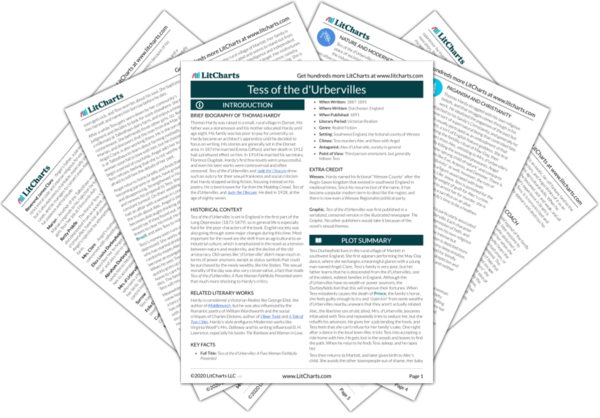Next
Summary
Tess of the d'Urbervilles Study Guide |
Next
Summary
|
Welcome to the LitCharts study guide on Thomas Hardy's Tess of the d'Urbervilles. Created by the original team behind SparkNotes, LitCharts are the world's best literature guides.

Wessex. Hardy named his fictional “Wessex County” after the Anglo-Saxon kingdom that existed in southwest England in medieval times. Since his resurrection of the name, it has become a popular modern term to describe the region, and there is now even a Wessex Regionalist political party.
Graphic. Tess of the d'Urbervilles was first published in a serialized, censored version in the illustrated newspaper The Graphic. No other publishers would take it because of the novel's sexual themes.